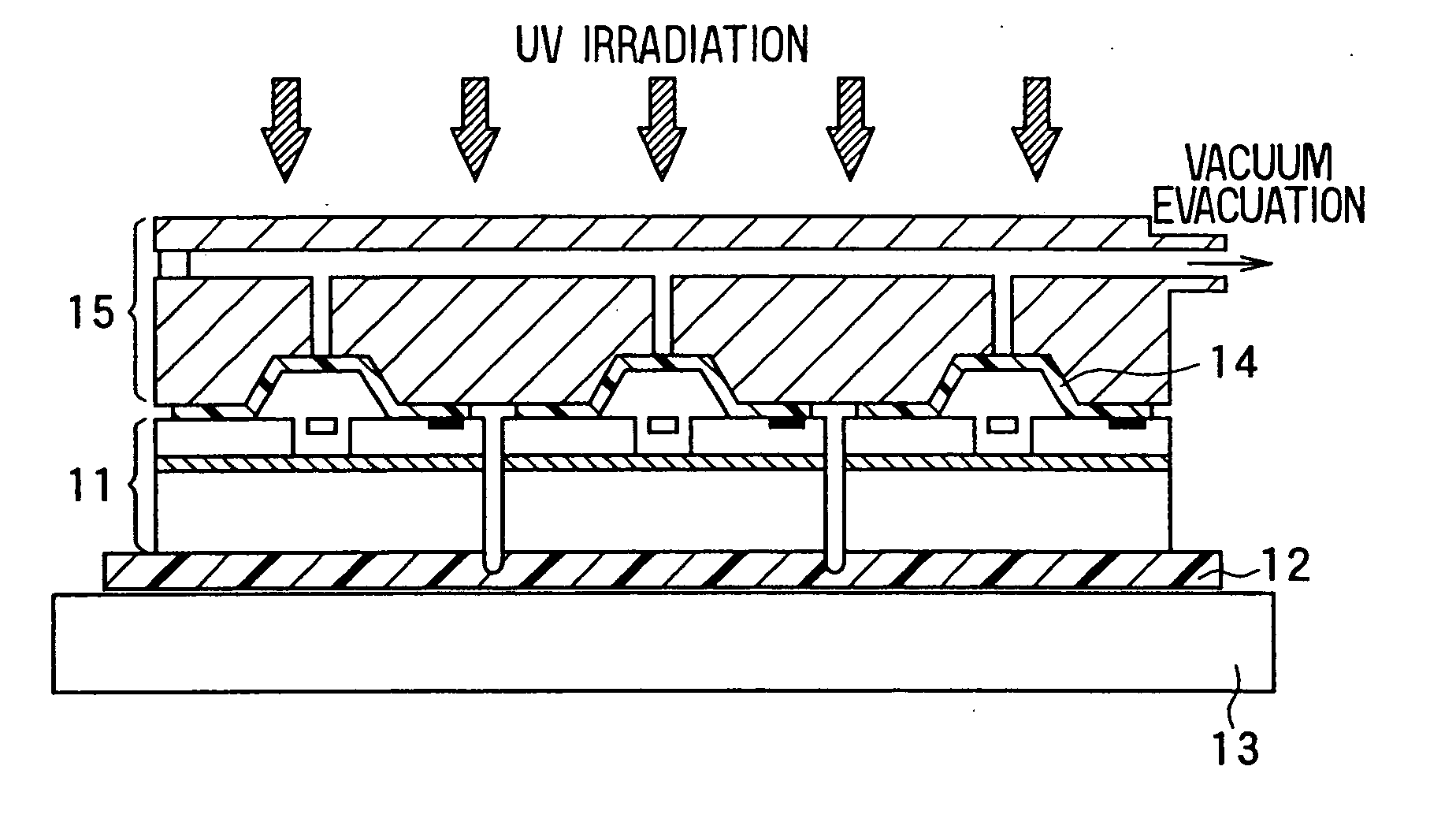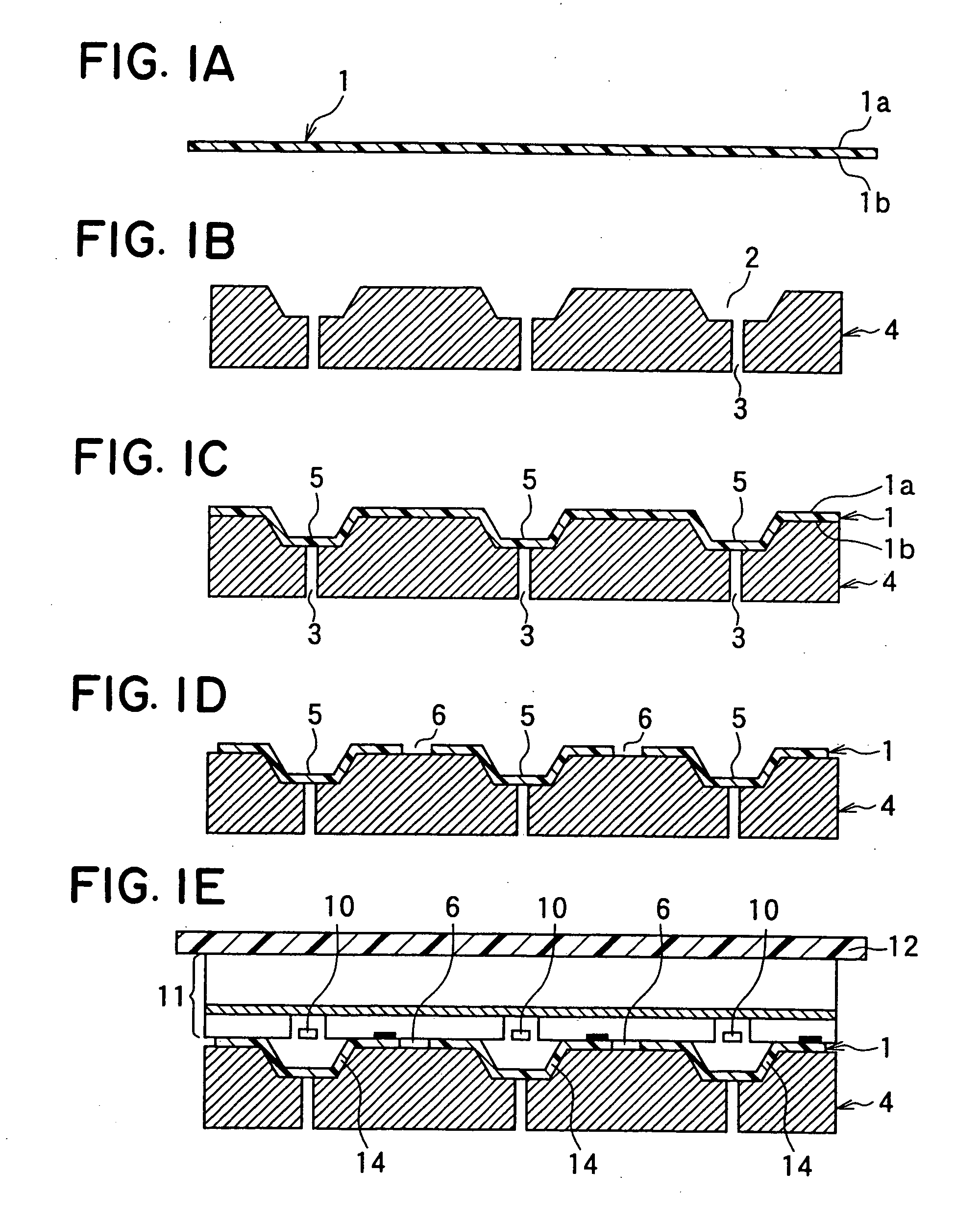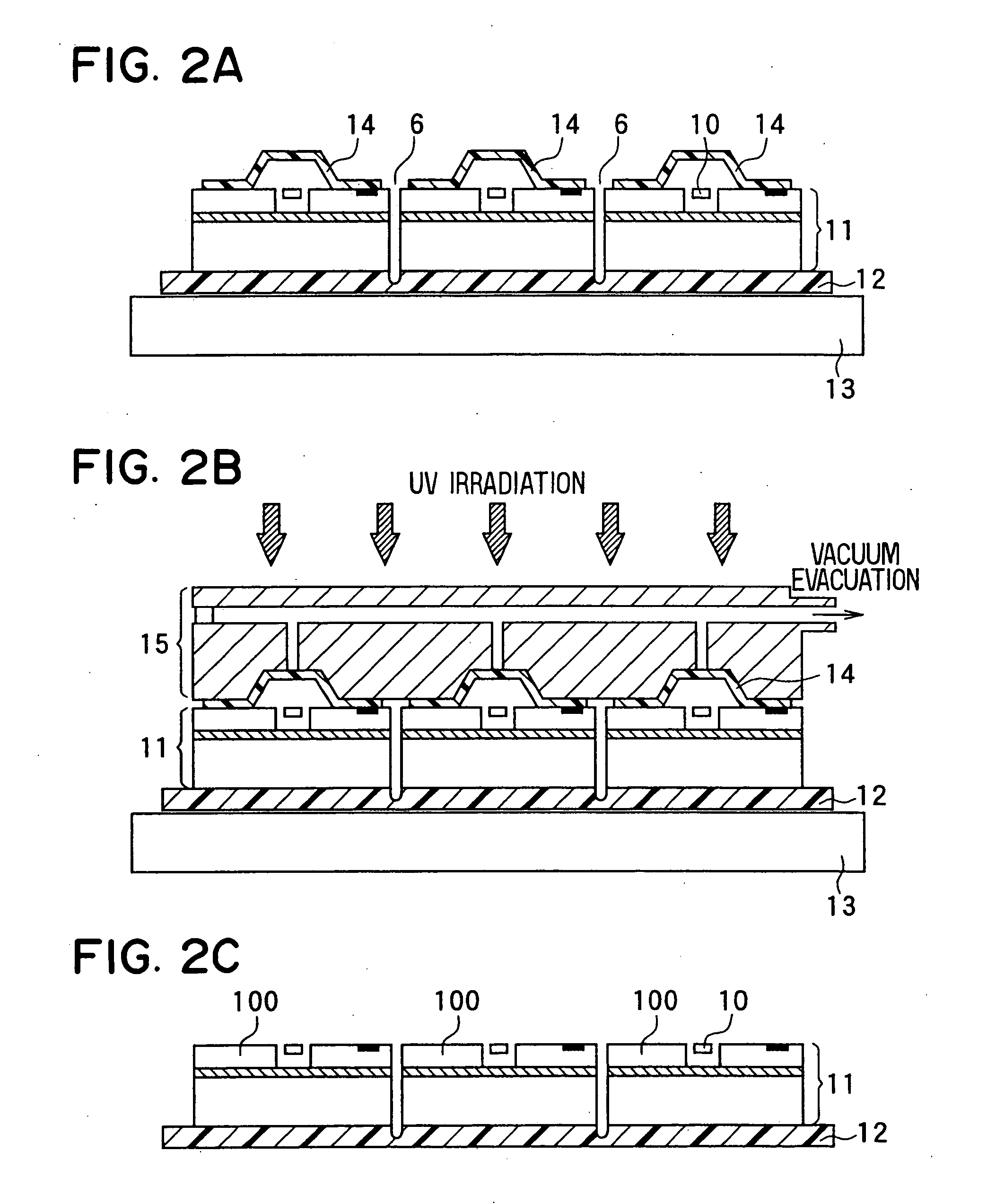Semiconductor sensor
a technology of semiconductor wafers and sensors, applied in the direction of microstructural devices, semiconductor/solid-state device details, coatings, etc., can solve the problems of insufficient protection of the protective layer from the moving portion, damage to the chips, adversely affecting the electrodes in electrical and mechanical connection, etc., to achieve the effect of improving the workability and throughput of detaching the semiconductor wafer from the jig
- Summary
- Abstract
- Description
- Claims
- Application Information
AI Technical Summary
Benefits of technology
Problems solved by technology
Method used
Image
Examples
first embodiment
[0031] In a first preferred embodiment, a method for producing a semiconductor device according to the present invention is applied to various semiconductor devices including movable portions such as a surface micro-processed type acceleration sensor, a rotation angle sensor, and a reflecting digital micro-mirror projector (DMD). The method in the first embodiment is explained referring to FIGS. 1A to 1E and 2A to 2C.
[0032] First, as shown in FIG. 1A, a protective sheet 1 is prepared. The protective sheet 1 is formed from an UV-setting adhesive sheet, a base of which is made of, for example, polyolefine. The protective sheet 1 has an adhesive surface la for covering a semiconductor wafer 11, and a surface 1b at an opposite side of the adhesive surface 1a. Further, a jig 4 shown in FIG. 1B is disposed on a heater block (not shown). The jig 4 has recesses 2 and holes 3 for vacuum absorption. The heater block performs the vacuum absorption in cooperation with the holes 3 of the jig 4....
second embodiment
[0043] In a second preferred embodiment, the protective members (protective caps) 14 are formed similarly to the first embodiment. Differences from the first embodiment are that the semiconductor wafer 11 has pad portions 21 for being electrically connected to external circuits by wire bonding (see FIG. 3E), and that the protective members 14 are not removed and remain in products. Therefore, the protective members 14 need to be partially removed at portions corresponding to the pad portions 21. The main differences from the first embodiment are described in more detail below. It should be noted that the same parts as those in the first embodiment are assigned to the same reference numerals in the second embodiment and other embodiments described below.
[0044]FIGS. 3A to 3E, 4A, and 4B schematically show the method for producing the semiconductor device in the second embodiment in a stepwise manner. The steps shown in FIGS. 3A, 3B and3C are performed in substantially the same manner...
third embodiment
[0050]FIGS. 8A to 8F show a method for producing a semiconductor device in a stepwise manner in a third preferred embodiment. In the first and second embodiments, the semiconductor wafer 11 is processed from one surface thereof. To the contrary, in the present embodiment, the semiconductor wafer 11 is processed from front and back surfaces thereof. That is, as shown in FIG. 8A, the semiconductor wafer 11 in the present embodiment has back surface processed portions 41 formed as opening portions by etching or the like performed from the back surface. The movable portions 10 are exposed from both front and back surfaces of the semiconductor wafer 11.
[0051] At a back side adhesive sheet bonding step, an adhesive sheet (back side protective sheet) 42 is bonded to the back surface of the semiconductor wafer 11 to protect the back surface. Further, at the wafer bonding step, the protective sheet 1, which is processed as in the first embodiment to have the grooves 6, is bonded to the fron...
PUM
| Property | Measurement | Unit |
|---|---|---|
| temperature | aaaaa | aaaaa |
| thickness | aaaaa | aaaaa |
| depth | aaaaa | aaaaa |
Abstract
Description
Claims
Application Information
 Login to View More
Login to View More - R&D
- Intellectual Property
- Life Sciences
- Materials
- Tech Scout
- Unparalleled Data Quality
- Higher Quality Content
- 60% Fewer Hallucinations
Browse by: Latest US Patents, China's latest patents, Technical Efficacy Thesaurus, Application Domain, Technology Topic, Popular Technical Reports.
© 2025 PatSnap. All rights reserved.Legal|Privacy policy|Modern Slavery Act Transparency Statement|Sitemap|About US| Contact US: help@patsnap.com



